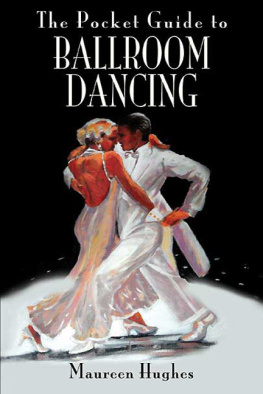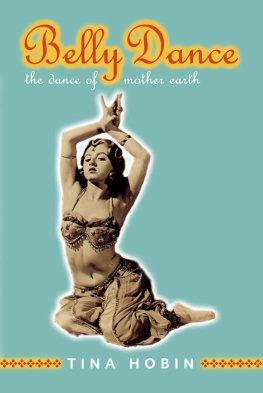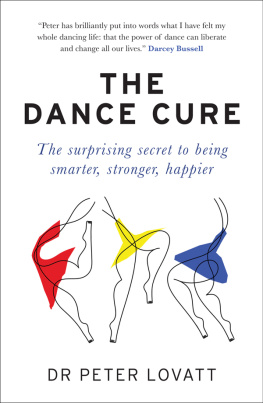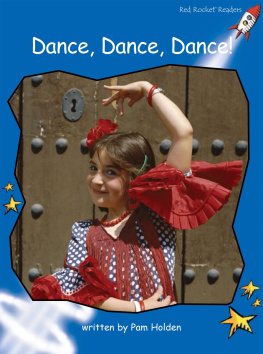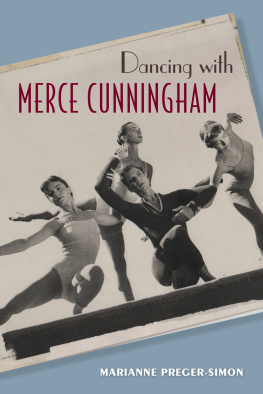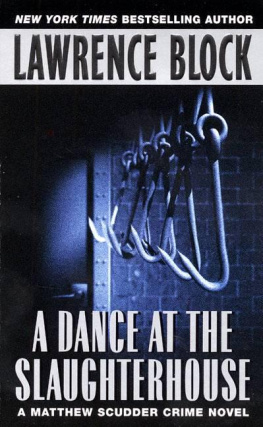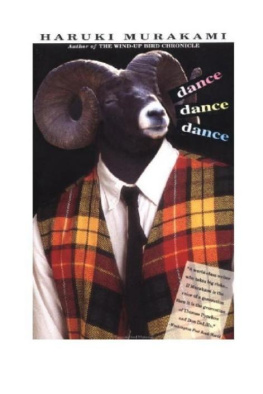Lawrence Hostetler - Walk Your Way To Better Dance
Here you can read online Lawrence Hostetler - Walk Your Way To Better Dance full text of the book (entire story) in english for free. Download pdf and epub, get meaning, cover and reviews about this ebook. year: 2011, publisher: Read Books Ltd., genre: Romance novel. Description of the work, (preface) as well as reviews are available. Best literature library LitArk.com created for fans of good reading and offers a wide selection of genres:
Romance novel
Science fiction
Adventure
Detective
Science
History
Home and family
Prose
Art
Politics
Computer
Non-fiction
Religion
Business
Children
Humor
Choose a favorite category and find really read worthwhile books. Enjoy immersion in the world of imagination, feel the emotions of the characters or learn something new for yourself, make an fascinating discovery.

- Book:Walk Your Way To Better Dance
- Author:
- Publisher:Read Books Ltd.
- Genre:
- Year:2011
- Rating:5 / 5
- Favourites:Add to favourites
- Your mark:
- 100
- 1
- 2
- 3
- 4
- 5
Walk Your Way To Better Dance: summary, description and annotation
We offer to read an annotation, description, summary or preface (depends on what the author of the book "Walk Your Way To Better Dance" wrote himself). If you haven't found the necessary information about the book — write in the comments, we will try to find it.
Walk Your Way To Better Dance — read online for free the complete book (whole text) full work
Below is the text of the book, divided by pages. System saving the place of the last page read, allows you to conveniently read the book "Walk Your Way To Better Dance" online for free, without having to search again every time where you left off. Put a bookmark, and you can go to the page where you finished reading at any time.
Font size:
Interval:
Bookmark:
Walk Your Way to BETTER DANCING

LAWRENCE A. HOSTETLER
BETTER DANCING
By LAWRENCE A. HOSTETLER
Author of The Art of Social Dancing
REVISED EDITION
Illustrated with Diagrams and
Reproductions from Photographs

DANCING, as a rule, interprets music through movement. Ballroom dancing is no exception. To evaluate the present trend in ballroom dancing, it is only necessary to note what the dance bands are playing.
The fox-trot in different temposslow, medium and fastis still the number one dance. But close behind are the popular Cuban and South American rhythms; especially in the larger cities where there are numerous Latin American bands. Not only rumbas, but also more sambas and tangos are being played.
With the marriage of American jazz to Cuban rumba to create the mambo, those with jitterbug tendencies can now express themselves to Latin American rhythms.
The field of dance instruction has likewise witnessed some interesting developments. When writing The Art of Social Dancing, the author found it expedient to coin the term dance-walk to designate the simple, unvaried progressive movement of the fox-trot and tango. As chords are fashioned from a musical scale, so fundamental figures can be derived from the dance-walk. During the intervening years, the value and importance of the dance-walk as a necessary foundation to modern ballroom dancing have become firmly established. Moreover, because it is based upon the same principles of body mechanics that apply to smooth efficient walking, the person learning to dance is, at the same time, improving his posture and carriage.
Another contribution to better dance instruction has been a more logical and coherent method of presenting the material. The presentation of dance steps to a pupil or class can be made in several ways. Some instructors base most of their dance patterns on the basic waltz step regardless of rhythm. Others teach set combinations of steps which the pupil memorizes by repetition with little understanding of their component parts.
The important point to be considered is the fact that the leader is also his own choreographer. He must plan the sequence of steps an instant before executing them. Therefore, it is essential for him to have a clear concept of his material. The rhythm and pattern of each figure and combination should be mentally pictured before the lead is given.
After teaching thousands of pupils and working with many different groups, including those at Teachers College, Columbia University; New York University; Savage School for Physical Education; New Jersey State Teachers College, and Horace Mann High School, the author has devised a simple, practical yet all-inclusive method of teaching social dancing. The object has been to present a complete and clear picture of each ballroom dance which will serve as a guide for both the leader and the one following.
Briefly, the method is as follows: Each type of dance is given a vocabulary of about half a dozen steps. Most of these figures consist of three transfers of weight to a measure of music. With a few exceptions, including the waltz and some steps of the medium fox-trot, the rhythm of each figure is quick-quick-slow.
The figures of certain dances, such as the waltz, rumba, mambo, samba and lindy, are joined together directly without intervening dance-walk steps. On the other hand, the dance-walk is used extensively to link the fundamental figures of the tango and all three forms of the fox-trot. Moreover, each dance has one particular figure that is the keynote of that dance, as a musical composition carries through it a certain theme. This figure is called the basic step.
This approach to dance instruction might be compared to the structure of a sentence. The separate movements that comprise the figures represent letters of the alphabet. The figures in turn constitute a vocabulary of three-letter words. After building up a useful vocabulary, the leader combines and rearranges these words or figures to form interesting and varied sentences or combinations. When the dance-walk is used, it can be compared to a conjunction. As the indiscriminate use of and as a connective may weaken a sentence, so the dance-walk between figures should be used sparingly. Learn to connect them directly. As a rule, avoid taking more than two or three dance-walk steps in succession. Again, when two figures overlap, that is, the finish of one is the beginning of the other, it can be compared to a liaison of the French language in which two words are joined and pronounced as one. Instead of the usual rhythm of quick-quick-slow, there may be four or even six quick steps in succession.
Besides this brief explanation of how steps of the various dances are presented, there are four other important points to be considered. A complete picture of the authors method of dance instruction includes five main points:
1. Body control. Muscles and joints are first conditioned and made responsive.
2. The dance-walk. Since this is based on a natural walk as determined by good body mechanics, it is the next logical step.
3. Moving with a partner. After the forward and backward dance-walk is understood by the individual, it is practiced with a partner.
4. Leading and following. All modern ballroom dancing is subject to this phase of the art. But ones ability to lead or follow depends upon mastery of the three preceding steps.
5. Steps and combinations in all rhythms. The four preceding points are merely a preparation for properly executing dance steps.
The first four points are covered in Chapters I to V, while the remaining chapters elaborate upon point five. However, these sections cannot be completely separated. Technic is only a means to an end. Dancing is the important thing. The two sections must be judiciously correlated. Moreover, it is not necessary or even advisable to master one dance rhythm before attempting another. However, it is important to differentiate clearly among them, not only in pattern of steps, but also in subtleties of rhythm and style.
Another helpful factor toward better dance instruction has been the adoption of a more suitable terminology. Descriptive terms are useful, not only for teaching purposes and the writing of notes, but also in aiding the pupil to fix in mind the various dance patterns. In the past names have been applied to steps and combinations without logic or reason. In this book some of the terms commonly used in the past have been replaced by simple, more appropriate names which in most cases describe the action of the figure. This work of modernizing the terminology was carried out by a committee, of which the author was a member, under the auspices of the Dancing Masters of America.
No book can adequately replace competent, personal instruction. But the author hopes that this volume will help to arouse the interest of the beginner in regard to the social, physical and esthetic advantages of ballroom dancing correctly done; that the more experienced dancer will be able to improve his technic while adding to his vocabulary of steps and combinations; that it will help the teacher to find the answers to certain troublesome questions, and at the same time improve the standards of this branch of the dance art.
While emphasis has been placed on technic, it is because the pleasure one derives from an activity is more or less in proportion to ones skill and ability in performing it. Expertness promotes confidence, which in turn develops poise both physical and mental. But aside from the satisfaction derived from the knowledge of being able to do a thing well, there is also the duty that is owed to ones partners. Like the art of living, social dancing is a co-operative affair, and so long as it retains its present form, the participant should consider it an obligation to perfect his technic to the best of his ability.
Next pageFont size:
Interval:
Bookmark:
Similar books «Walk Your Way To Better Dance»
Look at similar books to Walk Your Way To Better Dance. We have selected literature similar in name and meaning in the hope of providing readers with more options to find new, interesting, not yet read works.
Discussion, reviews of the book Walk Your Way To Better Dance and just readers' own opinions. Leave your comments, write what you think about the work, its meaning or the main characters. Specify what exactly you liked and what you didn't like, and why you think so.

